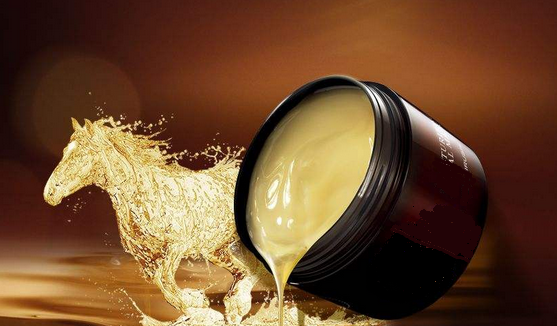To improve the basic conditions for storing grain, food should be stored so that “there is no leakage, there is no tide, it can be confined, it can be ventilated, it can prevent insects, it can also prevent rats, and it can be insulated and durableâ€. The quality of food that is placed in warehouses must be low, and the moisture content of dried foods must be low, and the safe water content standard must be achieved. General requirements of rice moisture does not exceed 14%, rice does not exceed 13.5%, wheat does not exceed 12.5%, corn does not exceed 13%, mung beans do not exceed 12.5%, soybeans do not exceed 12%. 2, the net that is mixed into the grain of the food to be less, so to remove impurities before entering the warehouse, so that the proportion of impurities below the standard (rice, wheat, corn, not more than 1%, rice does not exceed 0.4%). 3. Full grain grains must be fully matured and complete. For seed grains, this requirement is higher, otherwise it will affect the germination rate and safe storage time. The general requirement for these imperfect grains in food is no more than 6%. In order to achieve "one net, three nets full," except for a few days after the harvest, they also require attention from field management. Pest control is timely, so as to reduce weed seed and diseased grains in the grain. To grasp the timely harvest threshing, dry sun Yang. Completely killing stored grain pests The common pests of stored grain include rice black worms, mealworms, corn elephants, mung beans, wheat moths, and maggots. The main control methods: 1, closed pest control with altar, cylinders, pots and other grain storage, plastic film can be sealed, tightly sealed and sealed with mud. After such confinement, it can use the vigorous respiration of food to gradually deplete oxygen, create an oxygen-deficient or hypoxic state, and suppress the reproduction of pests, thus achieving safe grain storage. 2. The glands are mainly used to prevent moth pests, especially wheat moths. The food is properly covered so that moths do not lay eggs and no larvae can harm the grain. The capping time should preferably be performed immediately after the newly harvested rice, corn, wheat, etc. are put into storage. The sun-dried sand is put into a sack or a plastic bag and laid flat on the surface of the grain, so that the lid is tight, tight, dense and solid. 3. Ginger Pest Control Ginger has a strong stimulatory effect on stored grain pests and can inhibit pest activity. Ginger is cut into pieces, dried and placed on the surface of the grain, and 200 to 250 grams of ginger is placed per 100 kilograms of grain. Then, tightly cover the container of the ration, good pest control effect can be obtained. 4, kelp pest control 100 kilograms of food, put 0.8 to 1 kilograms of dried kelp, can absorb water, kill pests. According to the measurement, dry seaweed in grain can absorb 3% of water in grain within 7 days, killing more than 90% of earthworms and moth pests. 5, pepper pest control with a small bag, containing 10 to 15 grams of new pepper, into the storage of the altar, if the use of cylinders, alfalfa storage, can put a few more bags, covered with a lid, can effectively prevent pest infections . 6, boiling water kill insects first boil appropriate amount of boiling water, and maintain the pot boiling water temperature, and then the insects in the bean basket or bamboo basket, soaked in boiling water, and constantly stirring to make it heated evenly, Simmer for half a minute (Note: If the scalding time is too long will kill the germ and lose germination), immediately immerse in cold water prepared, cool and dry. Then it can be stored in a sealed container. Digging a new method of storing grain 1. Digging pits Choose a place with a high topography, dryness, and sunny location as a pit site. The pit was dug into a pour-glass cup with a small mouth and a large mouth. The wall of the pit was required to be smooth and the bottom of the pit was flat. 2. Fill the film with a non-destructive plastic film tube with a diameter slightly larger than the bottom of the cellar and a length greater than the depth of the cellar. Then, secure one end of the plastic film tube with a rope and place the end in the cellar. 3, loading grain will be dried after the food into the plastic tube, then the bag mouth firmly, and then cover 1 to 2 old sacks. 4. The cellar mouth of the seal will be covered with planks, bricks, etc. after being filled with grain, and then cover 10 to 20 cm thick soil.
Products collected from living horses include mare's milk, used by people with large horse herds, such as the Mongols, who let it ferment to produce kumis. Horse blood was once used as food by the Mongols and other nomadic tribes, who found it a convenient source of nutrition when traveling. Drinking their own horses' blood allowed the Mongols to ride for extended periods of time without stopping to eat.The drug Premarin is a mixture of estrogens extracted from the urine of pregnant mares (pregnant mares' urine), and was previously a widely used drug for hormone replacement therapy.The tail hair of horses can be used for making bows for string instruments such as the violin, viola, cello, and double bass. They are also used
for shaving and cosmetics products. Tetanus vaccines are still made from
the blood of immunized horses.

Other horse byproducts
Other Horse By Products,Horse Hair,Horse Hair for Wig,Horse Hair for String
Jiangxi Institute of Biological Products Inc. , http://www.jxinstitute.com
